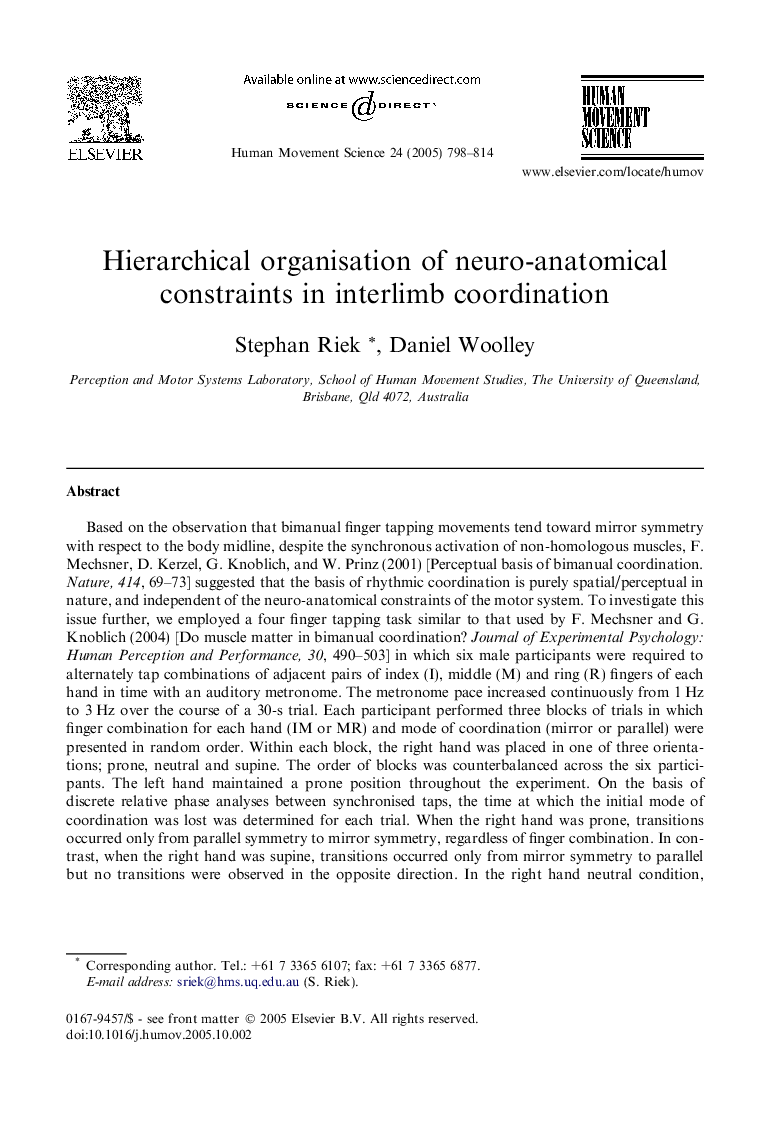| Article ID | Journal | Published Year | Pages | File Type |
|---|---|---|---|---|
| 9722459 | Human Movement Science | 2005 | 17 Pages |
Abstract
Based on the observation that bimanual finger tapping movements tend toward mirror symmetry with respect to the body midline, despite the synchronous activation of non-homologous muscles, F. Mechsner, D. Kerzel, G. Knoblich, and W. Prinz (2001) [Perceptual basis of bimanual coordination. Nature, 414, 69-73] suggested that the basis of rhythmic coordination is purely spatial/perceptual in nature, and independent of the neuro-anatomical constraints of the motor system. To investigate this issue further, we employed a four finger tapping task similar to that used by F. Mechsner and G. Knoblich (2004) [Do muscle matter in bimanual coordination? Journal of Experimental Psychology: Human Perception and Performance, 30, 490-503] in which six male participants were required to alternately tap combinations of adjacent pairs of index (I), middle (M) and ring (R) fingers of each hand in time with an auditory metronome. The metronome pace increased continuously from 1Â Hz to 3Â Hz over the course of a 30-s trial. Each participant performed three blocks of trials in which finger combination for each hand (IM or MR) and mode of coordination (mirror or parallel) were presented in random order. Within each block, the right hand was placed in one of three orientations; prone, neutral and supine. The order of blocks was counterbalanced across the six participants. The left hand maintained a prone position throughout the experiment. On the basis of discrete relative phase analyses between synchronised taps, the time at which the initial mode of coordination was lost was determined for each trial. When the right hand was prone, transitions occurred only from parallel symmetry to mirror symmetry, regardless of finger combination. In contrast, when the right hand was supine, transitions occurred only from mirror symmetry to parallel but no transitions were observed in the opposite direction. In the right hand neutral condition, mirror and parallel symmetry are insufficient to describe the modes of coordination since the hands are oriented orthogonally. When defined anatomically, however, the results in each of the three right hand orientations are consistent. That is, synchronisation of finger tapping is determined by a hierarchy of control of individual fingers based on their intrinsic neuro-mechanical properties rather than on the basis of their spatial orientation.
Related Topics
Life Sciences
Neuroscience
Cognitive Neuroscience
Authors
Stephan Riek, Daniel Woolley,
